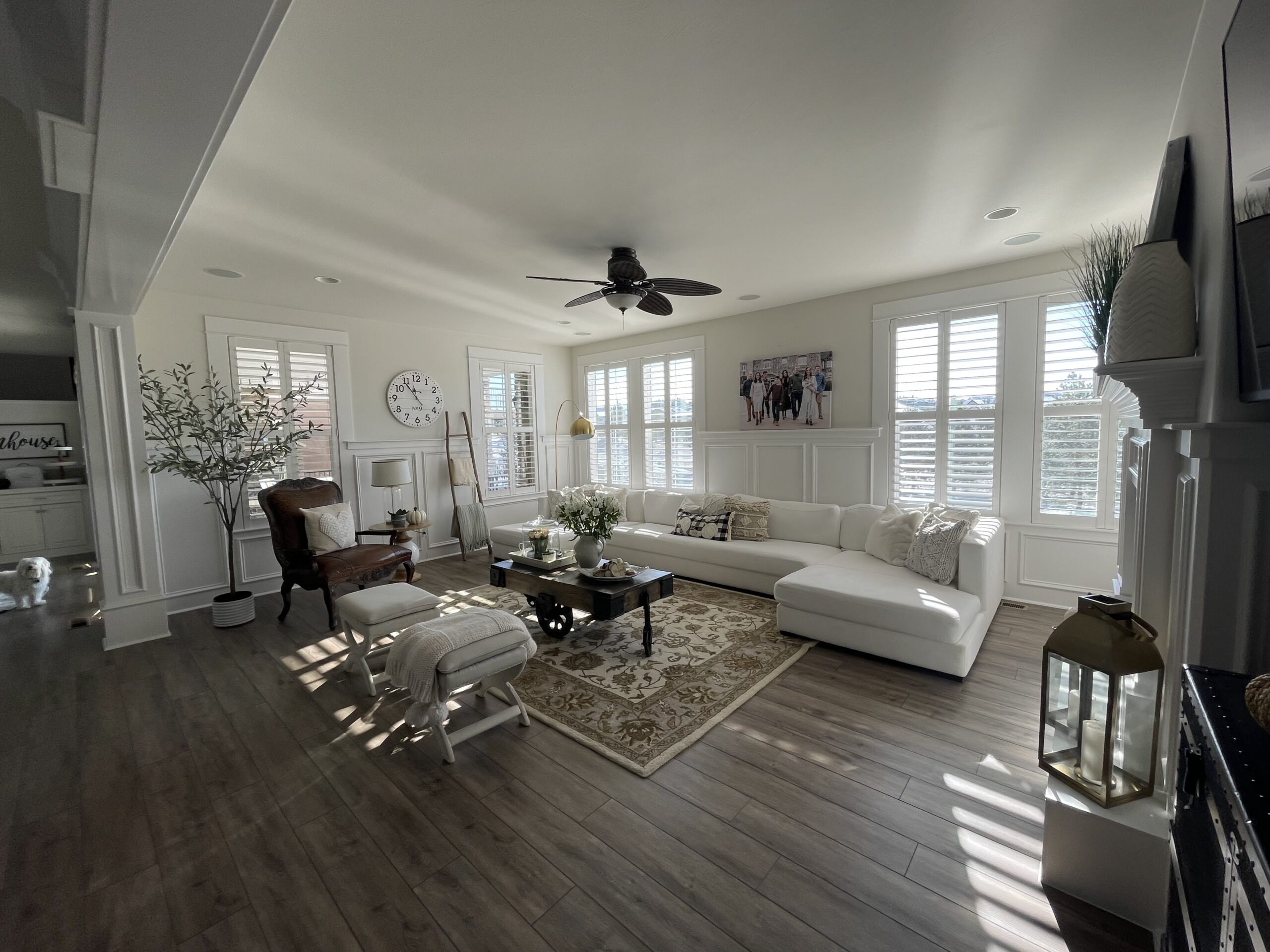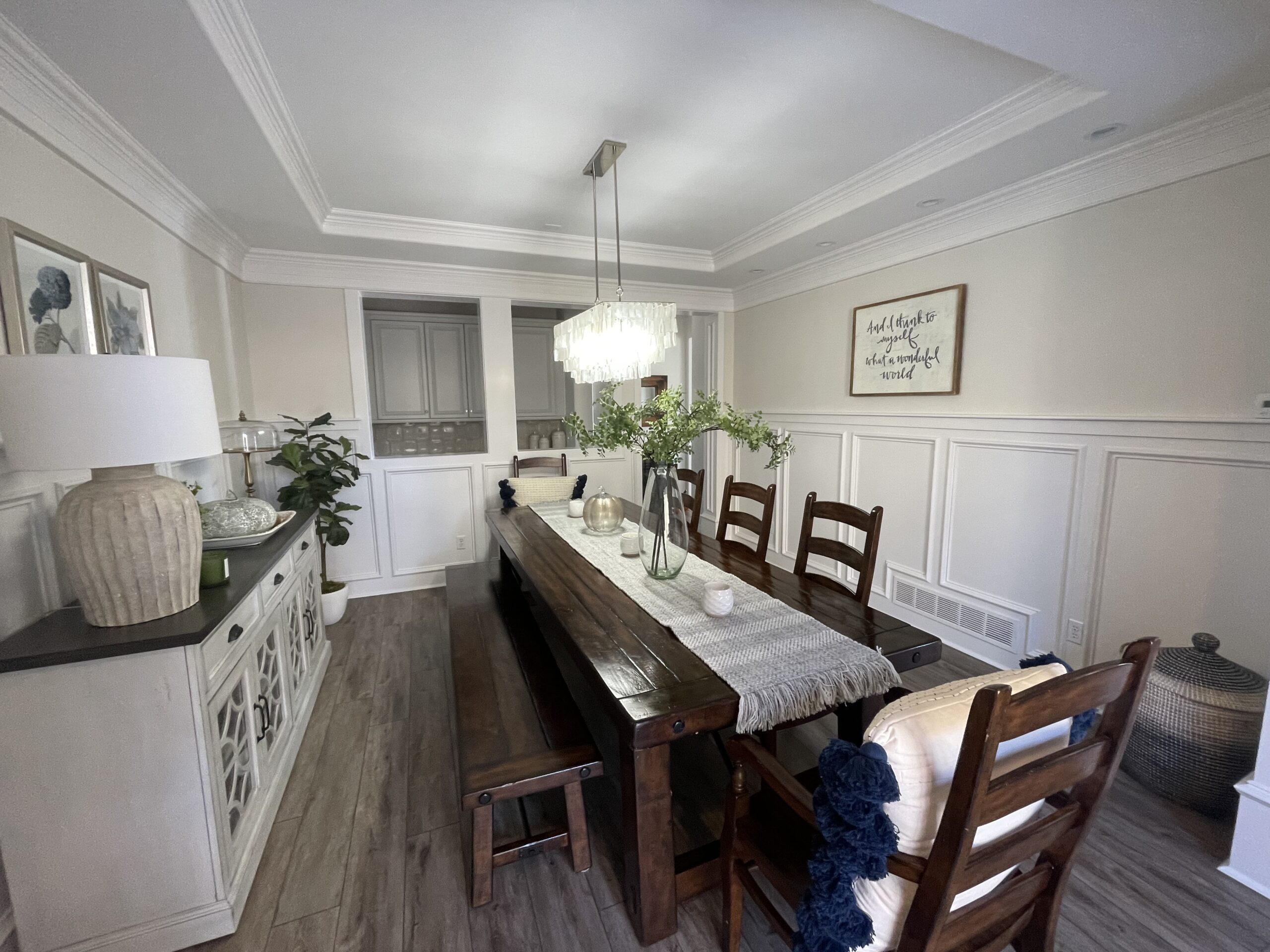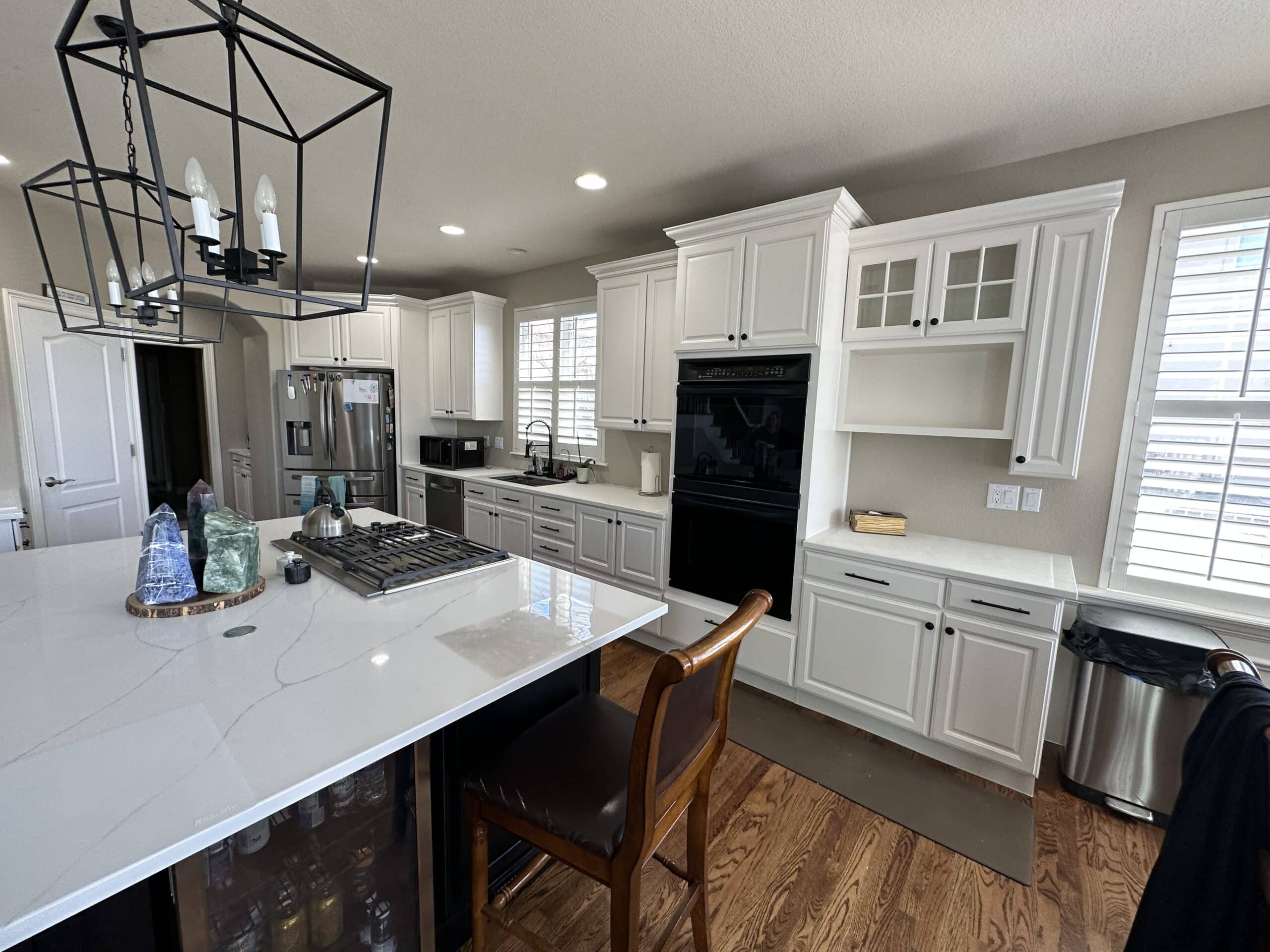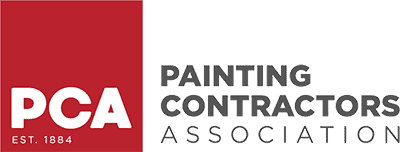Humidity fluctuations significantly impact interior paint. When indoor moisture levels rise and fall, paint and the surfaces beneath expand and contract. This movement can cause swelling, shrinking, cracking, blistering, or peeling. Left unchecked, it shortens paint lifespan, increases maintenance costs, and compromises aesthetics.
Understanding and controlling humidity before, during, and after painting is the key to a durable, long-lasting finish.
Understanding Humidity and Its Role in Paint Performance
What is Humidity? Absolute vs. Relative Humidity
Humidity refers to the amount of water vapor in the air. The most relevant measure for painters is relative humidity (RH) — the percentage of moisture present relative to the air’s capacity at a given temperature.
When RH rises above 60%, paint curing slows, adhesion weakens, and mold risk increases. At levels above 80%, many paints cannot fully cure, leaving them vulnerable to long-term damage.
How It Interacts with Paint and Substrates
Moisture quietly interacts with every coating system. Porous materials like drywall, plaster, and wood absorb and release water vapor readily, creating stress on the paint. Non-porous surfaces such as metal and tile do not absorb moisture but can accumulate condensation, leading to localized failure.
Water-based paints (latex, acrylic) are particularly sensitive to high moisture during application and curing. Evaporation slows, leaving surfaces tacky and prone to defects. Oil-based paints tolerate short-term spikes better, but repeated swings still lead to brittleness, cracking, and eventual adhesion loss.
Common Problems Caused by Humidity Fluctuations

Extended Drying Times
High humidity slows water and solvent evaporation. Paint remains wet longer, attracting dust and causing uneven sheen. Surfaces may remain tacky for days, impacting the final appearance and durability.
Paint Blistering and Bubbling
Rapid increases after painting can trap moisture beneath the paint film. Escaping vapor creates blisters or bubbles. This is common in bathrooms without exhaust fans or kitchens with poor ventilation.
Peeling and Flaking
Repeated expansion and contraction cycles compromise adhesion. Paint layers lose their bond to the substrate, often peeling in sheets.
Mold and Mildew Growth
Persistent humidity combined with organic surfaces creates ideal conditions for mold. Using mildew-resistant paints, such as Benjamin Moore Aura® Bath & Spa or Sherwin-Williams Duration Home®, mitigates this risk.
Cracking and Chalking
Low humidity following a humid period causes paint films to shrink and become brittle. Over time, surfaces chalk — a powdery residue that dulls color and reduces protective qualities.
The Science – Why Paint Films Respond to Moisture
Paint Curing vs. Drying
Drying is the physical evaporation of water or solvents; curing is the chemical crosslinking that strengthens the film throughout. Fluctuating humidity primarily affects curing, weakening the final paint layer.
Hygroscopic Nature of Substrates
Materials like wood and drywall absorb and release water naturally. Swelling pushes against the paint; shrinking pulls away, stressing adhesion over time.
Thermal Expansion and Contraction
Changes often accompany temperature swings. Together, they cause expansion and contraction in both substrate and paint film, compounding stress on coatings.
Measuring and Monitoring Indoor Humidity
Tools and Methods
Accurate RH readings come from digital hygrometers. Smart sensors log changes over time and alert when levels go out of range. Infrared thermal imaging can reveal hidden moisture in walls before visible damage occurs.
Target Levels for Painting
For optimal results, maintain 40–50% RH and temperatures of 50–85°F (10–29°C) during application and curing. This ensures proper drying, curing, and adhesion.
How to Control Humidity for Better Paint Performance
Before Painting
Inspect for leaks or water intrusion. Use a moisture meter to verify wall conditions. Select paints designed for humid spaces:
-
Benjamin Moore Aura® Bath & Spa
-
Sherwin-Williams Duration Home®
-
Behr Premium Plus® Kitchen, Bath & Trim
Apply moisture-resistant primers such as Zinsser® Mold Killing Primer or KILZ® Kitchen & Bath.
During Painting
Dehumidifiers help control RH. Fans improve circulation but should not blow directly on wet paint. Painting in the morning or late afternoon often avoids peak humidity levels.
After Painting
Maintain stable RH for 2–4 weeks during curing. Continue using HVAC systems or portable units. Avoid cleaning or scrubbing surfaces until fully cured.
Rooms and Seasons Most Affected

Bathrooms and Kitchens
Use exhaust fans vented outdoors, select moisture-resistant paints, and seal grout lines to prevent vapor penetration.
Basements
Dehumidifiers are essential. Vapor barriers and proper sump pump maintenance reduce water intrusion risks.
Seasonal Transitions
Spring and summer bring humidity spikes; winter indoor air can be excessively dry. Both extremes affect paint durability.
Service-Specific Insight – How Professionals Handle Humidity Challenges
Site Assessment
Professionals measure RH and substrate moisture, documenting conditions to determine the correct coating system.
Surface Prep for Humid Environments
Cleaning, sanding, and chemical etching maximize adhesion. Moisture-blocking primers are applied to seal substrates.
Product Selection
Experts choose paints rated for high moisture and consider VOCs for enclosed spaces.
Warranty and Maintenance Plans
Some warranties cover humidity-related failures if maintenance guidelines are followed.
Long-Term Maintenance Tips
Monitor indoor humidity annually. Recaulk windows and plumbing penetrations. Clean surfaces with mild, mold-inhibiting solutions. Repaint every 5–7 years in humid climates versus 7–10 years in drier environments.
Humidity Impact on Interior Paint
| RH Level | Risk to Paint | Recommended Action |
|---|---|---|
| 40–50% | Optimal | Proceed with painting |
| 55–60% | Mild risk | Use dehumidification |
| 65–75% | High risk | Delay painting until RH drops |
| 80%+ | Severe | Postpone painting; investigate moisture source |
Recommended Paints for Humid Environments
| Brand & Product | Finish Options | Key Features |
|---|---|---|
| Benjamin Moore Aura® Bath & Spa | Matte | Mildew-resistant, color retention in high humidity |
| Sherwin-Williams Duration Home® | Satin, Semi-gloss | Moisture resistance, washable finish |
| Behr Premium Plus® Kitchen, Bath & Trim | Satin, Semi-gloss | Mildew-resistant, stain-blocking |
| Zinsser® Perma-White® | Satin, Semi-gloss | Mold-proof guarantee, self-priming |
People Also Ask – Quick Answers

What indoor humidity is too high for painting?
Above 60% RH increases drying and curing risks.
Can paint dry in 80% humidity?
It will, but curing is compromised — not recommended.
What type of paint is best for humid rooms?
Moisture-resistant acrylic latex with mildewcides.
How long should I run a dehumidifier after painting?
Keep RH stable for the full curing period (2–4 weeks).
Will moisture-resistant primer stop peeling paint?
It can prevent new failures but cannot fix existing adhesion loss without proper surface prep.
Conclusion
Humidity fluctuations are a primary cause of interior paint failure, yet they are often overlooked. From extended drying times to peeling, blistering, and mold growth, unstable moisture levels stress paint at every stage.
The solution: assess and control humidity before painting, select appropriate primers and coatings, and maintain steady RH during and after curing. Partnering with a professional contractor experienced with local climate patterns ensures a long-lasting, attractive finish.
Next step: Schedule a humidity assessment and interior paint consultation today to protect your interior surfaces.



